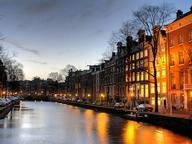Quiz Answer Key and Fun Facts
1. The earliest form of Dutch culture is that of the "hunebedbouwers". This were people who lived in the northeast of the Netherlands around 3000 BC. They were famous for building dolmen. What was the use of these dolmen?
2. During the Roman Era, the Netherlands were split between Rome and Germanic tribes. What important river was the border between Germania Inferior and the "barbarians"?
3. Many "barbarian tribes" lived in the Netherlands. Which of these was NOT a Dutch-barbarian tribe?
4. The Romans built the first cities in the Netherlands. Which cities were founded by the Romans?
5. Roman legions and architecture made a major impact on the early Dutch culture and fashion.
6. In 69 AD a barbarian tribe called the "Batavi" revolted against Roman rule. Together with their allies, the Frisii and the Cananefates, and their great commander "Gaius Julius Civilis" they destroyed many Roman forts along the Rhine.
7. The Batavi revolted against the Roman Empire, because there was much chaos in the Roman Empire. Why was the Roman Empire in chaos?
8. In 358 AD a new tribe settled in the Netherlands. Soon they became the majority and drove the Romans out the Netherlands. Which people started settling in the Netherlands in 358 AD?
9. In the 5th century Attila attacked the Western Roman Empire many times. Attila had to cross the Frankish lands. Why could Attila so easily cross this land?
10. At the end of the 5th century, a Salian Frankish king crowned himself king of the Ripuarian Franks. This started a new era in the Netherlands. What was the name of this king?
Source: Author
Dcape5
This quiz was reviewed by FunTrivia editor
bloomsby before going online.
Any errors found in FunTrivia content are routinely corrected through our feedback system.
